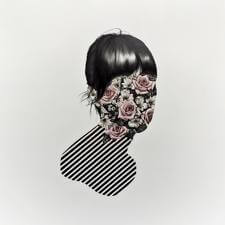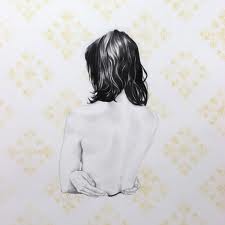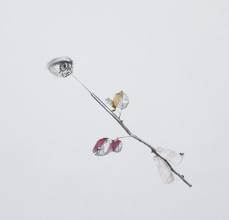Langdon Graves: Mind, Body, Belief


Langdon Graves is a Brooklyn Based Sculptor and Artist, as well as a lecturer at the Parsons Institute for Art and Design. Her work takes on a unique aesthetic that mixes meticulous detail with the deconstruction of form, producing a collection of work that is personal and that dives deep into the human psyche. Langdon is currently a featured artist with our friends at Uprise Art, where her work is available for interested parties. We took some time to learn about her inspiration and process.
Q: Why do you decide to work in sculpture or on paper?
I get ideas for both sculptures and drawings and it usually depends on upcoming shows or projects which one I decide to work on. I’ve been more attracted to drawing lately because of an interest in anatomy and the evolution of anatomical illustration. I’m doing quite a bit of that right now and integrating it with non-bodily imagery that helps tell the story of the body. Sometimes a curator or gallery director will request sculpture, so I’ll work on that.

Q: Does fashion influence you? Patterns? Design? Music?
What inspires me is mostly in the form of words – literature, lectures – and not other imagery, so I develop my own aesthetic.
Q: How do you spend your day? How is the “act of creating” a ritual for you or supported by a belief system?
How I spend my day differs by the day and the project I’m working on. A typical day lately, since I’m working on a body of drawings, goes something like this: coffee and oatmeal and drawing until about 2pm in my pjs at my home studio. I listen to one or two records on repeat (right now it’s Beacon’s new EP) or Radiolab or NPR, or online lectures (Oxford, NYU). Then I have to shower and go outside to get out of my head for a bit. I’ll ride my bike to lunch somewhere or visit the other studio just to touch base with what I’m doing there (I usually have a few sculptural projects going). That’s four to five days a week. The other days I teach at Parsons, research and gather material for my work, try to see my friends and maybe some other art.

Q: In what ways is your work a physical vs. psychological portrait of yourself or those you know?
I know what I do is patterned and perhaps ritualistic, but I never step back to see it that way. I guess the only real personal belief system I have is that we have to do things that make us feel important; that we matter, in our own individual ways. For me, that’s making images and objects that reflect and synthesize ideas and events from the past, present and probably the future. That’s what makes me feel connected to other people and other times. I may not have any great influence on anyone else’s life, but I have to keep mine interesting.
Anything an artist makes is a kind of portrait. We’re incredibly self-centered. Not in a bad way. But we see ourselves in everything – and everything we make is about ourselves. I’m no exception – my work reflects my interests and my position, when it doesn’t literally feature parts of me – my eye, my hair, my hands, etc. The work I was making a few years ago was very personal, dealing with health issues, unresolved feelings about religion, and also my relationship with my mother. I realized that these were tropes that weren’t unique to me, so I opened up my subject matter to broader concepts and more historical and mythological narratives.

Q: What does editing mean in your work? Are your subjects selected pieces of a whole?
I edit constantly. I usually make several small sketches of a composition that forms in my head and pull pieces from each of them for what becomes the actual drawing. Sometimes I know exactly what I want from beginning to end, but other times I backtrack, erase, move, or replace much of the imagery. Connections, discoveries and research inspire me to erase what I’ve drawn and start over again to incorporate the right symbolism. Now I have an anatomical reference (the body), a scientific reference (intellect) and a theological reference (belief), underscoring the thesis of my current body of work.
Artist Website | Reporting by Michael Fasciano










Responses